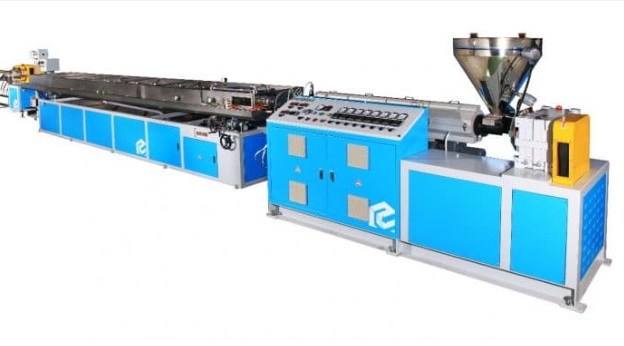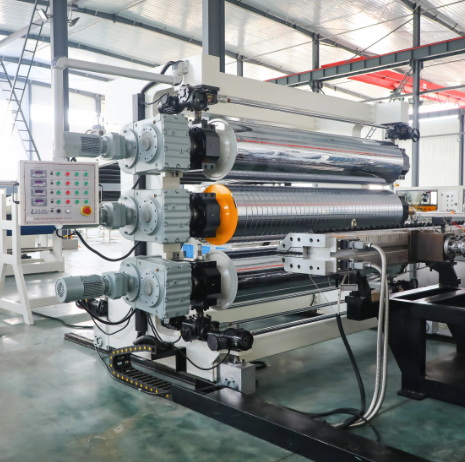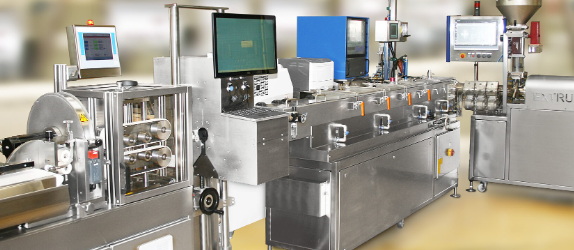Content Menu
● Introduction to Medical Tube Extrusion Machinery
>> Key Components of Medical Tube Extrusion Machinery
● Steps to Import China Medical Tube Plastic Extrusion Machinery
>> 1. Identify Your Needs
>> 2. Find Reliable Suppliers
>> 3. Negotiate Prices
>> 4. Inspect the Machinery
>> 5. Handle Logistics
● Key Considerations for Importing from China
>> 1. Quality Control
>> 2. Regulatory Compliance
>> 3. Payment Terms
>> 4. After-Sales Support
● Market Trends and Opportunities
>> Technological Advancements
>> Market Segmentation
● Challenges and Opportunities in China
>> Opportunities for International Suppliers
● Ensuring Quality and Compliance
>> Quality Control Measures
>> Technological Innovations
● Conclusion
● FAQs
>> 1. What are the key factors to consider when selecting a supplier for medical tube extrusion machinery in China?
>> 2. How do I ensure the quality of the medical tube extrusion machinery imported from China?
>> 3. What are the common payment terms for importing machinery from China?
>> 4. What are the typical costs associated with importing medical tube extrusion machinery from China?
>> 5. How do I handle customs clearance for medical tube extrusion machinery imported from China?
● Citations:
Importing medical tube extrusion machinery from China can be a cost-effective way to enhance your manufacturing capabilities, especially in the healthcare sector. China is renowned for its advanced manufacturing technology and competitive pricing, making it an ideal destination for sourcing high-quality medical equipment. In this article, we will guide you through the process of importing China medical tube plastic extrusion machinery at the best price, highlighting key considerations and steps involved.

Introduction to Medical Tube Extrusion Machinery
Medical tube extrusion machinery is used to produce tubes for various medical applications, such as catheters, IV lines, and surgical tools. These machines are designed to meet stringent quality standards to ensure patient safety and device reliability. The process involves extruding raw materials like PVC, PE, or silicone through a die to create precise, functional tubing.
Key Components of Medical Tube Extrusion Machinery
1. Extruder: The heart of the extrusion line, responsible for melting and shaping raw materials into tubes.
2. Die Heads: Determine the tube's dimensions and shape.
3. Calibration Systems: Ensure consistent sizing and roundness.
4. Cooling and Cutting Units: Stabilize the tubing and guarantee precise lengths.
Steps to Import China Medical Tube Plastic Extrusion Machinery
1. Identify Your Needs
- Specifications: Determine the type of machinery you need based on the materials and tube sizes required.
- Quality Standards: Ensure compliance with international standards such as ISO 13485 for medical devices.
2. Find Reliable Suppliers
- B2B Platforms: Use platforms like Alibaba, Made-in-China, or Global Sources to find suppliers.
- Verify Certifications: Look for suppliers with ISO 9001, ISO 13485, and CE certifications.
3. Negotiate Prices
- Compare Quotes: Get quotes from multiple suppliers to compare prices.
- Negotiate: Use market research to negotiate the best price.
4. Inspect the Machinery
- Factory Acceptance Test (FAT): Conduct a FAT to ensure the machinery meets specifications.
- Third-Party Inspection: Consider hiring a third-party inspector for added assurance.
5. Handle Logistics
- Incoterms: Use terms like FOB or CIF to clarify shipping responsibilities.
- Customs Clearance: Ensure compliance with customs regulations in your country.
Key Considerations for Importing from China
1. Quality Control
- GMP Compliance: Ensure suppliers follow Good Manufacturing Practices (GMP) for medical devices.
- Material Quality: Verify the quality of materials used in production.
2. Regulatory Compliance
- Certifications: Ensure machinery meets international standards like ISO 13485.
- Local Regulations: Comply with local regulations regarding medical device manufacturing.
3. Payment Terms
- Secure Payment Methods: Use methods like Letter of Credit (LC) or Telegraphic Transfer (T/T) for secure transactions.
4. After-Sales Support
- Warranty and Maintenance: Ensure suppliers offer comprehensive after-sales support.

Market Trends and Opportunities
The medical tube extrusion equipment market is expected to grow significantly, driven by technological advancements and increasing demand for medical devices. The integration of AI and automation in extrusion processes enhances efficiency and reduces operational costs, making equipment more appealing to manufacturers[2]. China's medical equipment market, while heavily reliant on imports, presents opportunities for international suppliers, particularly in high-end medical devices[6].
Technological Advancements
- Automation and AI: Enhance production efficiency and product quality.
- Smart Manufacturing: Enables data-driven decision-making and continuous improvement.
Market Segmentation
The market is segmented by type (single screw, twin screw) and application (PVC tube, TPU tube, FPA tube, others), with distinct growth trends influenced by consumer preferences and technological advancements[2].
Challenges and Opportunities in China
China's 'Buy China' policy and centralized procurement mechanisms can pose challenges for foreign suppliers. However, the country's reliance on imports for high-end medical devices creates opportunities for international companies[3][6].
Opportunities for International Suppliers
- High-End Medical Devices: China's reliance on imports for advanced medical equipment presents opportunities for international suppliers.
- Market Expansion: Strategic partnerships and innovative products can help companies gain a competitive edge in China.
Ensuring Quality and Compliance
Ensuring the quality and compliance of imported machinery is crucial. This involves conducting thorough inspections, verifying certifications, and complying with local regulations.
Quality Control Measures
- Inspections: Conduct regular inspections during and after production.
- Certifications: Verify ISO 13485 and other relevant certifications.
- Regulatory Compliance: Ensure machinery meets local and international standards.
Technological Innovations
The integration of advanced technologies like automation and AI in medical tube extrusion machinery enhances efficiency and product quality. These innovations are crucial for maintaining competitiveness in the global market[2].
Conclusion
Importing China medical tube plastic extrusion machinery requires careful planning and execution. By understanding your needs, finding reliable suppliers, negotiating prices, inspecting machinery, and handling logistics effectively, you can acquire high-quality machinery at competitive prices. Always prioritize quality control and regulatory compliance to ensure the machinery meets international standards.

FAQs
1. What are the key factors to consider when selecting a supplier for medical tube extrusion machinery in China?
When selecting a supplier, consider factors such as ISO certifications (e.g., ISO 13485), experience in producing medical-grade equipment, customer reviews, and compliance with Good Manufacturing Practices (GMP).
2. How do I ensure the quality of the medical tube extrusion machinery imported from China?
Ensure quality by conducting a Factory Acceptance Test (FAT), verifying certifications like ISO 13485, and hiring a third-party inspector if necessary. Also, ensure the machinery meets local regulatory standards.
3. What are the common payment terms for importing machinery from China?
Common payment terms include Letter of Credit (LC), Telegraphic Transfer (T/T), and sometimes Western Union or Money Gram. Secure methods like LC are recommended for large transactions.
4. What are the typical costs associated with importing medical tube extrusion machinery from China?
Costs include the machinery price (e.g., $35,000 to $200,000), shipping costs, customs duties, and potential inspection fees. The total cost depends on the machinery specifications and destination country.
5. How do I handle customs clearance for medical tube extrusion machinery imported from China?
Ensure compliance with local customs regulations by correctly classifying the machinery using the appropriate Harmonized System (HS) code. Engage a customs broker if necessary to facilitate the process.
Citations:
[1] https://www.twinscrew.net/en/article/Medical-Tube-Extrusion-101.html
[2] https://www.linkedin.com/pulse/medical-tube-extrusion-equipment-market-trends-om6uf/
[3] https://www.whitecase.com/insight-alert/first-international-procurement-instrument-case-relating-eu-medical-devices-chinas
[4] https://www.youtube.com/watch?v=nonW8ie60R4
[5] https://www.grandviewresearch.com/industry-analysis/extrusion-machinery-market-report
[6] https://www.ptl-group.com/blog/the-booming-medical-equipment-market-in-china-trends-drivers-and-opportunities/
[7] https://go-dux.com/en/how-to-import-machines-from-china/
[8] https://www.frontiersin.org/journals/public-health/articles/10.3389/fpubh.2022.926216/full
[9] https://www.datainsightsmarket.com/reports/medical-tube-extrusion-equipment-1562241
[10] https://www.sino-shipping.com/importing-machinery-from-china/
[11] https://www.made-in-china.com/products-search/hot-china-products/Medical_Tube_Extrusion_Line.html
[12] https://www.legal500.com/developments/thought-leadership/import-of-medical-devices-into-india-opportunities-and-challenges/
[13] https://www.sourcifychina.com/plastic-extrusion-machine-guide-in-depth/
[14] https://www.linkedin.com/pulse/medical-tube-extrusion-equipment-market-size-share-growth-asale/
[15] https://www.emerald.com/insight/content/doi/10.1108/rausp-03-2021-0046/full/html
[16] https://owlsourcing.com/source-medical-equipment-from-china/
[17] https://www.marketsandmarkets.com/Market-Reports/medical-tubing-market-162082103.html
[18] https://www2.deloitte.com/content/dam/Deloitte/cn/Documents/life-sciences-health-care/deloitte-cn-lshc-chinese-medical-device-companies-going-global-en-240221.pdf
[19] https://www.hqts.com/a-guide-to-importing-machinery-from-china/
[20] https://www.thebusinessresearchcompany.com/report/medical-tubing-global-market-report













